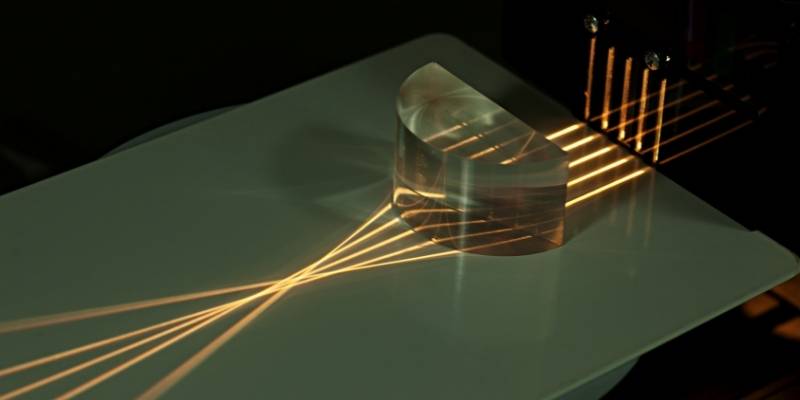Have you ever wondered why projectors use convex lens? In fact, a convex lens is used in a variety of appliances and everyday accessories.
Even if you do not have a projector, you will find a convex lens offering its services in a variety of accessories like the car’s headlight, magnifying glasses, traffic signals, binoculars, telescopes, etc.
Owing to their wide scope of application, they are extremely useful for many tasks and accessories across several industries.
Besides the number of other applications, they are used in projectors. It is a good fit for a projector than the concave lens that improves its functionality.
Why Do Projectors Use Convex Lens?
Video projectors produce images by focusing light onto the screen with the help of a lens.
The important component of a projector or the lens used to focus light is the convex lens.
This begs the question why do projectors need convex lenses? A convex lens is used in a projector to focus all the light at a focal point.
All beams of light are reflected off the projector’s surface at a parallel angle.
If it did not function like that, different colors would converge on different points of the screen, instead of one focal point.
The convex lens makes sure light is being focused on a particular focal point.
Convex lenses are designed in a particular way that they are thicker in the middle than the edges to converge all the light beams on a single focal point.
This makes it possible for people watching from below to see it clearly.
How Does A Convex Lens Work in a Projector?
Convex lend is thicker in the middle as compared to the edges. These lenses work by bending rays of incident light inward, toward their focal point.
It allows the projector to focus light onto a surface to project large, highly visible images on the screens or walls.
The primary purpose of a convex lens is to focus light. The thicker the convex lens, the more good it is at bending light.
A convex lens is curved outwards, it is supposed to magnify the image.
When the light passes through the convex lens, we get an inverted magnified image.
In simple terms, the image on the screen is larger in size than the size of the object.
All the outgoing light rays meet at a point where the image is formed. When these rays meet at a focal point, a real image is formed.
The real image can be projected onto a screen, or captured in a camera, either way, we need convex lenses for this task.

Related How to Freeze a Projector Screen?
Convex Lens in a Projector – A Basic Requirements
No matter what model it is, a convex lens is a basic requirement for a projector. It enlarges the projected size of a picture, giving you the freedom to place and mount the projector wherever you want.
Flexible installation is the most standard trait of projectors nowadays.
Without the Convex (zoom) lens in a projector, the only way for picture alignment would be a manual adjustment, moving projectors back and forth until the user finds the right spot.
It is the principal lens that can have a wide range of zoom capabilities.
The bigger the zoom factor, the more enlarged the image will be projected onto the screen. Learn How to Make the Projector Screen Smaller?
For instance, a lens with 1.2x zoom features will increase the projection size by 20%. A limited zoom range will make the fine-tuning process easier.
Related How Big is the 100-inch Projector Screen?
Why Do Projectors Use Convex Instead of Concave Lenses?
Convex lenses are specifically designed to enhance the size of the picture, whereas, concave lenses produce virtual images which can not be captured or projected onto the projector screen.
The concave lens creates images that have positive magnification which means the picture created is smaller than the object.
A convex lens is used in a microscope, magnifying glasses, vision-corrective glasses, cameras, projectors, and others.
The converging or positive lens is thicker in the middle and lets the light rays pass through it and then the refracted rays converge at one point.
Projectors are optical devices that magnify the image. With a convex lens in the projector, the image generated is magnified and inverted.
